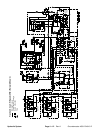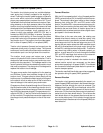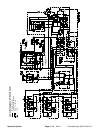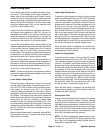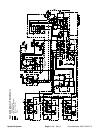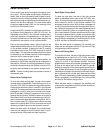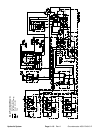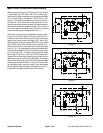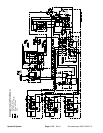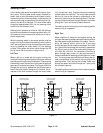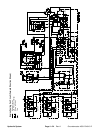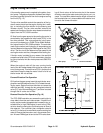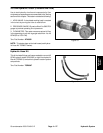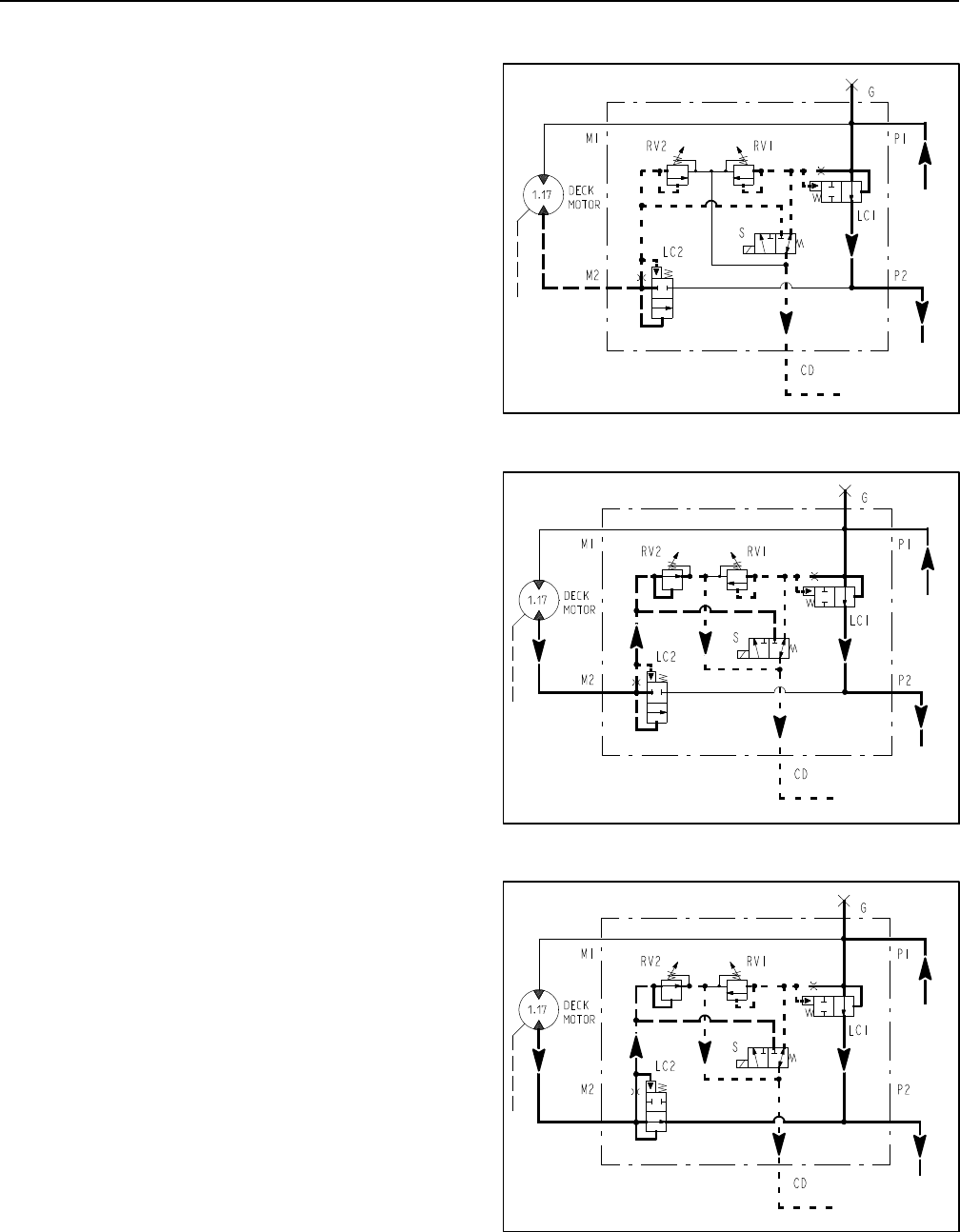
Groundsmaster 4000--D/4010--DHydraulic System Page 4 -- 20
Mow Circuit Cutting Deck Blade Braking
When the operator turns the PTO switch OFF orif adeck
is raised with the PTO switch ON, PTO manifold sole-
noid valve (S) is de--energized causing bypass cartridge
(LC1) to shift (refer to information in M ow Circuit in this
section). This shifted cartridge allows oil return out man-
ifold port P2. At the same time, solenoid valve (S) in its
neutralposition prevents any sense line flow t hrough the
spool which causes the brake cartridge (LC2) to shift to
its neutral position blocking return flow from the deck
motor and slowing the cutting blades (Fig. 11).
The inertia of therotating cutting blades, however, effec-
tively turns the deck motor into a pump causing an in-
crease in pressure as the flow from the motor comes up
against the closed brake cartridge (LC2). When this
pressure builds to approximately 600 PSI (41 bar), relief
valve (RV2) opens which allows a small amount of hy-
draulic flow to return to tank through a manifold sensing
line (Fig. 12). This flow causes a pressure increase that
shifts brake cartridge (LC2) to once again allow oil flow
from the motor (Fig. 13). When return pressure drops
below 600 PSI (41 bar), relief valve (RV2) reseats and
causes LC2 to close again blocking return flow from the
deck motor to furtherslowthe cutting blades. This action
of the brake relief valve opening and the brake cartridge
shifting occurs several times in a very short time frame
as the blades finally come to a stop. Once the blades
have stopped, brake cartridge LC2 remains in the neu-
tral position to keep the deck motor from rotating.
Figure 11
PTO
MANIFOLD
PUMPFLOW
RETURN
Figure 12
PTO
MANIFOLD
PUMPFLOW
RETURN
Figure 13
PTO
MANIFOLD
PUMPFLOW
RETURN



